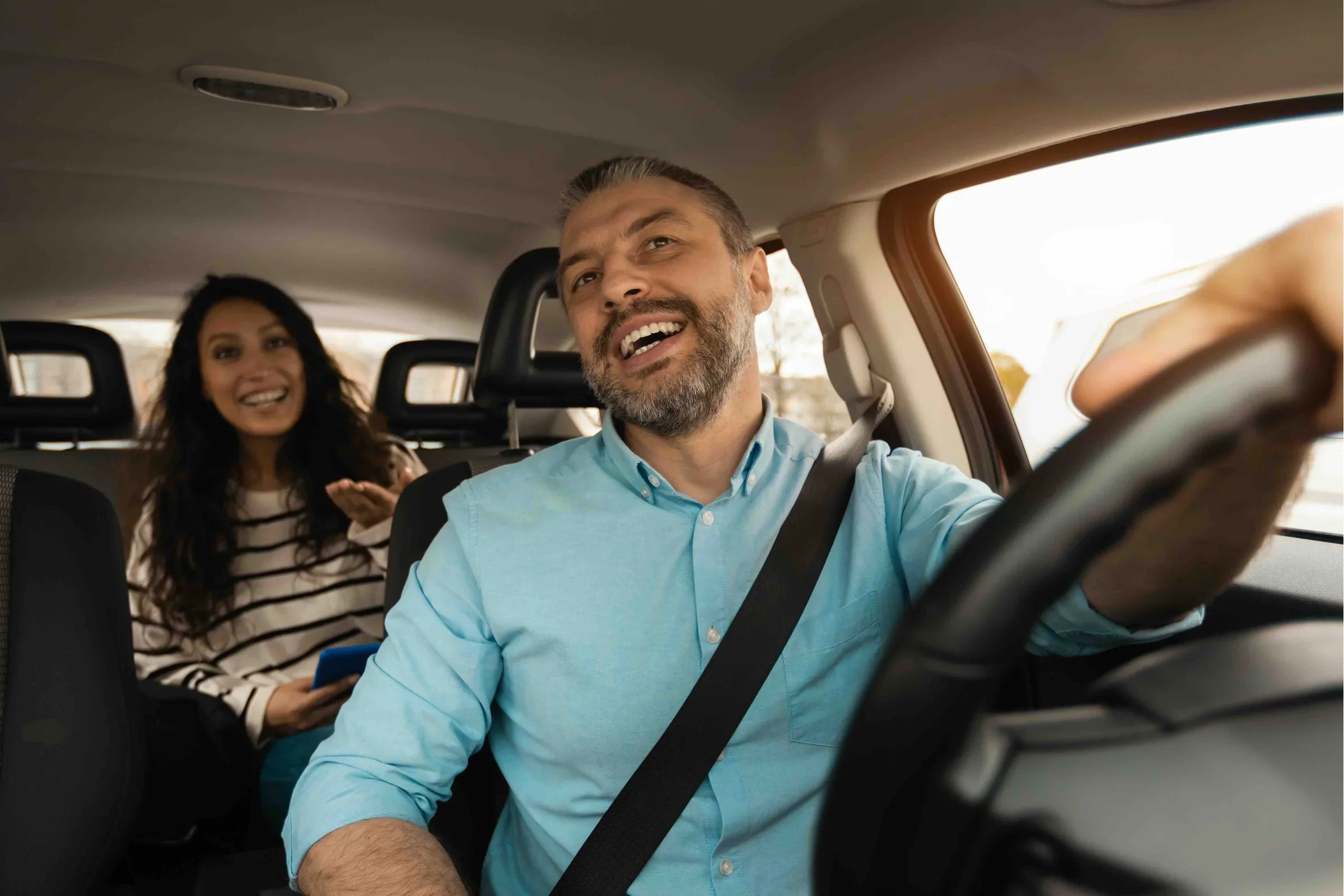Should Riders Be Verified Like Drivers Before Their First Trip?
Rideshare drivers face strict verification, but riders don’t. Should passengers verify their identity before their first trip? A simple check could boost safety, reduce fraud, and create a more secure experience for everyone.
-ygr49x6yaj.webp)
In the rideshare industry, driver verification is a standard procedure. Before hitting the road, drivers must pass background checks, vehicle inspections, and identity verification to ensure safety and reliability. But what about riders? Should passengers go through a verification process before taking their first trip?
Rideshare drivers go through extensive verification before hitting the road, but what about passengers? Without identity checks, drivers often pick up complete strangers with little to no information. Should riders be required to verify their identity before their first trip? Implementing a simple verification process could enhance safety, reduce fraud, and create a more secure experience for everyone. It’s time to rethink how both drivers and riders are held accountable in the rideshare ecosystem.
The Current Industry Standard
Most major rideshare companies, including Uber and Lyft, require drivers to undergo extensive screening before they can start working. These include:
Criminal background checks
Driving record checks
Vehicle inspections
Identity verification (driver’s license, profile photos, etc.)
On the other hand, riders typically do not go through any verification process beyond entering a name, phone number, and payment method. Some platforms allow riders to verify their identity voluntarily, but it is not a requirement.
Why Are Riders Not Verified?
Most rideshare companies prioritize a frictionless user experience for passengers. The goal is to make it as easy as possible for a new user to download the app, request a ride, and start using the service. Adding a mandatory verification step could create barriers to entry and reduce the number of new users signing up.
Additionally, many platforms argue that drivers can rate and report passengers, which acts as a deterrent against bad behavior. However, this approach is reactive rather than proactive, meaning incidents can still happen before a problematic rider is flagged.
Why Rider Verification Should Be Considered
There are valid reasons why rider verification should be implemented:
1. Driver Safety
Drivers take significant risks by picking up strangers with little to no information about them. While passengers see a driver’s name, rating, and vehicle details before getting into a car, drivers often have minimal details about the rider beyond a first name and pickup location. Verifying riders could help reduce risks for drivers and increase overall safety.
2. Preventing Fraud & Fake Accounts
Unverified accounts make it easier for individuals to create fake profiles, use stolen credit cards, or repeatedly violate platform policies. Some drivers report passengers using different names or burner accounts after receiving low ratings or being banned. A simple identity verification step could prevent this.
3. Reducing Incidents & Disruptive Behavior
Riders who know they are verified and identifiable may be less likely to engage in problematic behavior, such as fare evasion, harassment, or vandalizing vehicles. If drivers must be accountable, shouldn’t riders be held to the same standard?
4. Preventing Violent Incidents
Recent incidents highlight the dangers drivers face when picking up unverified passengers. In Los Angeles, an Uber driver was the victim of a violent carjacking, as reported by KTLA (source). Meanwhile, in North Bay, California, a rideshare driver was shot at in what appears to be a related crime, according to NBC Bay Area (source).
These incidents raise an important question: Should rideshare platforms do more to verify passengers before allowing them to book a ride? Implementing passenger verification could be a crucial step in preventing such violent incidents.
How Could Rider Verification Work?
A balance needs to be struck between security and ease of use. Here are some potential solutions:
Basic ID Verification — Require first-time users to upload a government-issued ID or link a verified social media account.
Selfie Verification — Similar to what some platforms require for drivers, passengers could submit a quick selfie to confirm their identity.
One-Time Verification for New Users — Instead of verifying every ride, new riders could go through a one-time identity check before their first trip.
Rating-Based Verification — Riders with low ratings or flagged behavior could be required to verify their identity before continuing to use the service.
Would This Affect Rider Adoption?
Some argue that requiring verification could slow down sign-ups, especially for users who need a ride urgently. However, a well-designed process could mitigate this. If done correctly, a quick verification step should not take more than a minute.
Platforms like Airbnb, Turo, and other peer-to-peer services already require identity verification for both parties, yet they continue to grow. If rideshare platforms truly prioritize safety, implementing a similar standard for passengers could be a natural next step.
Final Thoughts
The rideshare industry has spent years perfecting driver verification processes, but rider verification remains a gray area. While the focus has been on ensuring that drivers are safe and trustworthy, passengers also play a crucial role in the ecosystem.
A simple and efficient rider verification process could protect drivers, reduce fraudulent activity, and create a safer experience for everyone. As competition in the transportation space grows and companies look for ways to differentiate themselves, passenger verification could become a key feature for platforms that truly prioritize safety and fairness.
What OMNI Is Doing About It
At OMNI, we recognize the importance of a secure network for both drivers and passengers. To help prevent situations like the recent carjacking in Los Angeles and shooting in North Bay, OMNI is reinforcing security measures to ensure a trusted rideshare environment. While maintaining ease of use, we are exploring rider verification processes that will enhance safety without creating unnecessary friction for users.
What Do You Think?
Should riders be verified before taking their first trip? Let us know your thoughts!

Planning a No-Surge Airport Ride to San Antonio International (SAT)

How to Schedule an Early Morning Ride to AUS Without Surge Pricing

Omni Begins in Texas: A New Chapter for Riders and Drivers in San Antonio and Austin

Introducing Circles: A Safer Ride Option by Women and Nonbinary, for Women and Nonbinary

Why Real Drivers Still Matter

How Omni Matches You with a Driver
-muqvevx52d.webp)
How to Pay Less for Your Rideshare Trips While Supporting Fairness

Why Transparency in Rideshare Pricing Matters More Than Ever
-ygr49x6yaj.webp)
Should Riders Be Verified Like Drivers Before Their First Trip?

The Future of Rideshare: Who Really Wins in the Shift to Automation?
-y6dnitj3d7.webp)
Why the Future of Driving Might Look More Like Owning a Business

Download Before Your Trip! How to Use San Jose’s Local Ride App OMNI For Smoother Travel

We’re Not Just Another Ride-Hailing App — And That’s the Point
Other Posts


Fair fares, every time — no surge pricing. Download the Rider App.
Join 4,000+ startups building faster with us
-ncsawyuuju.webp)


insights, straight to your inbox.



